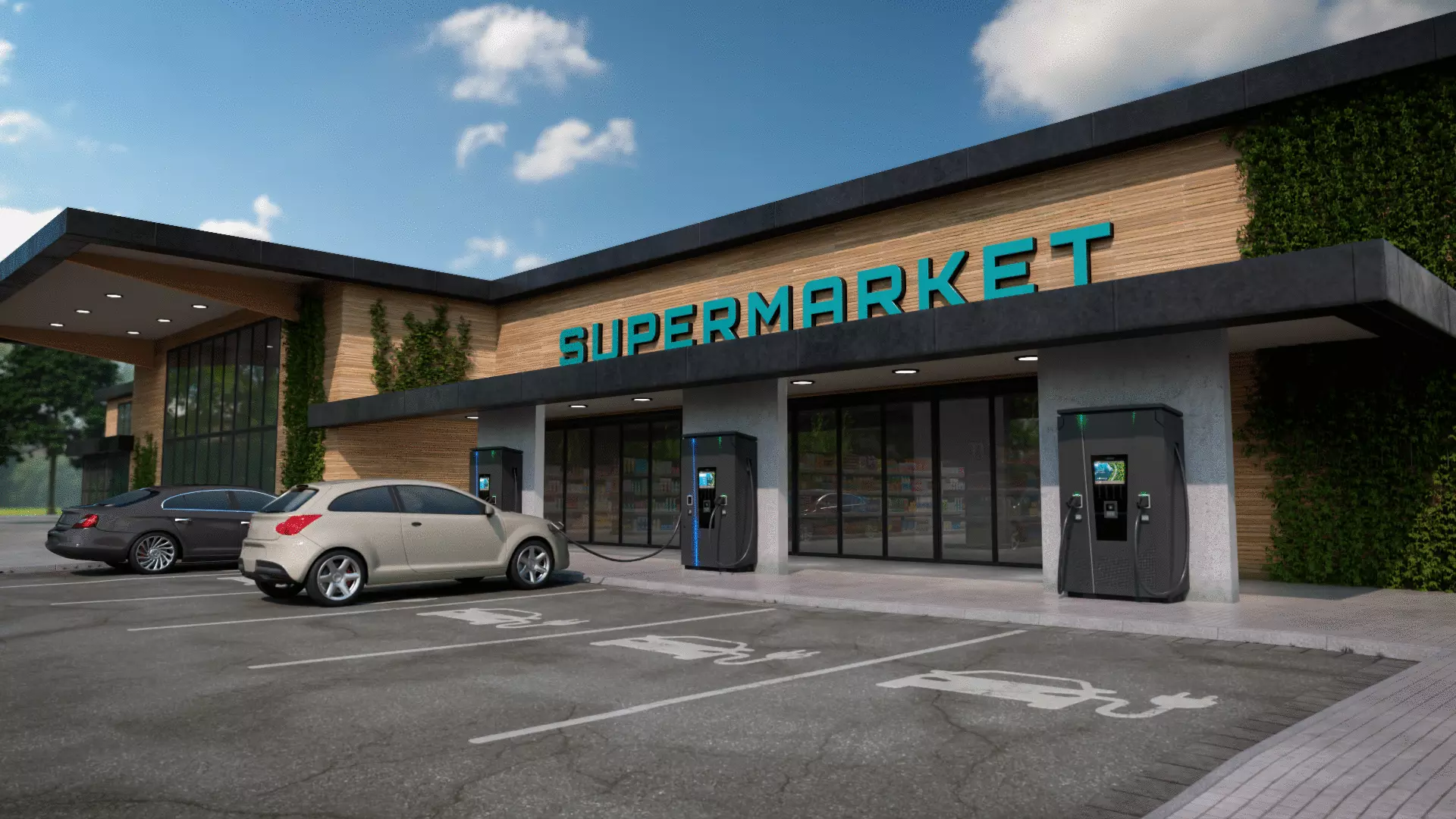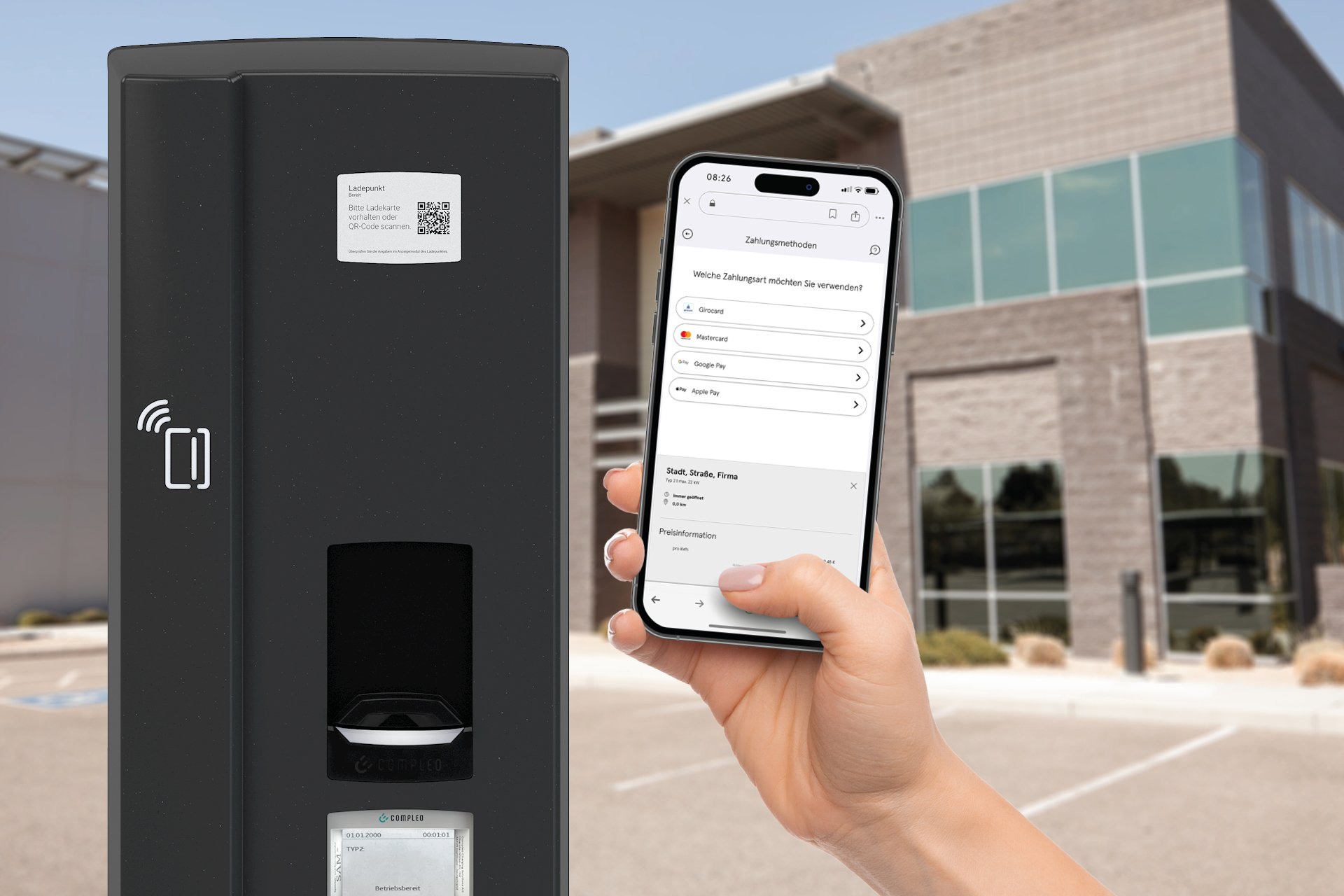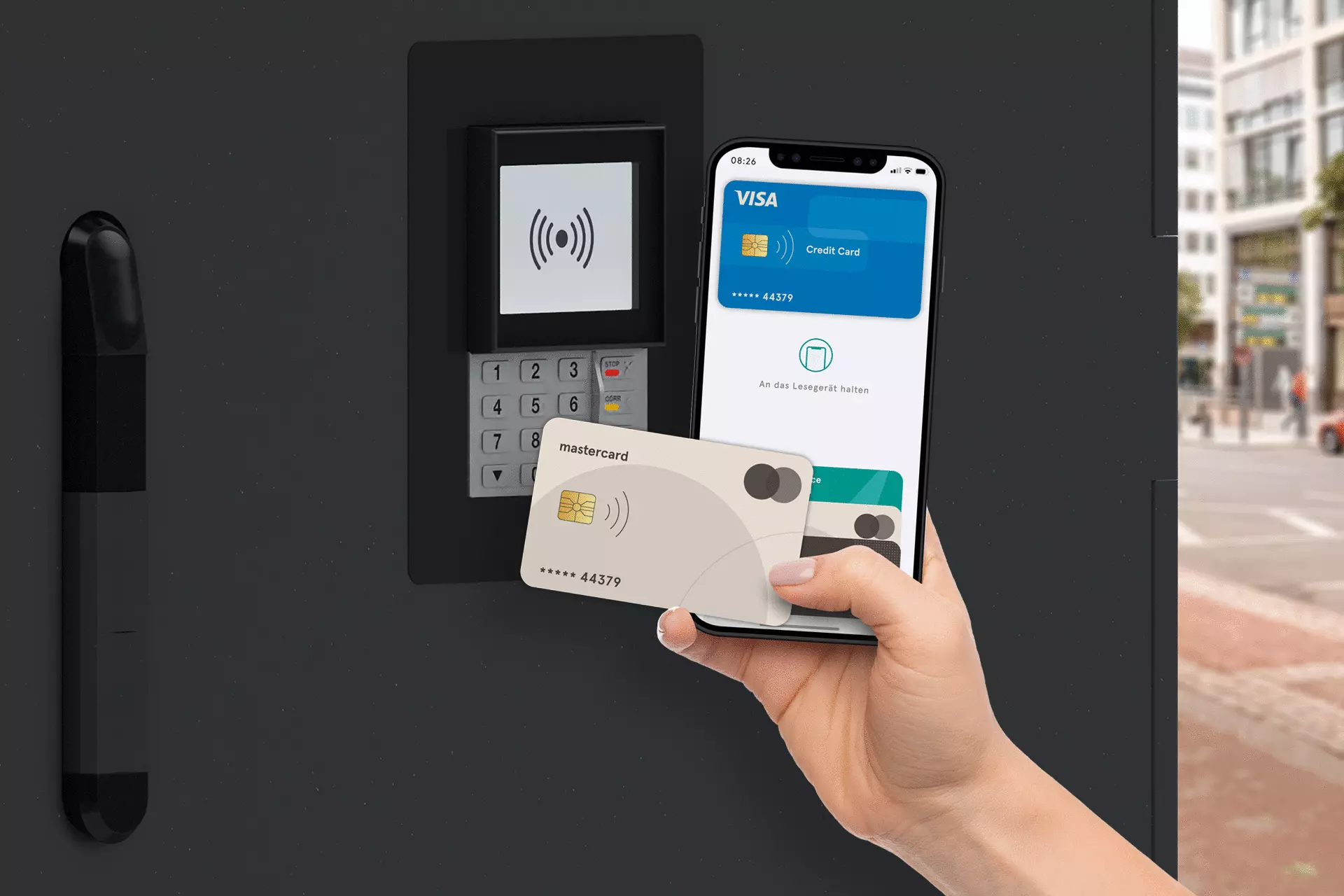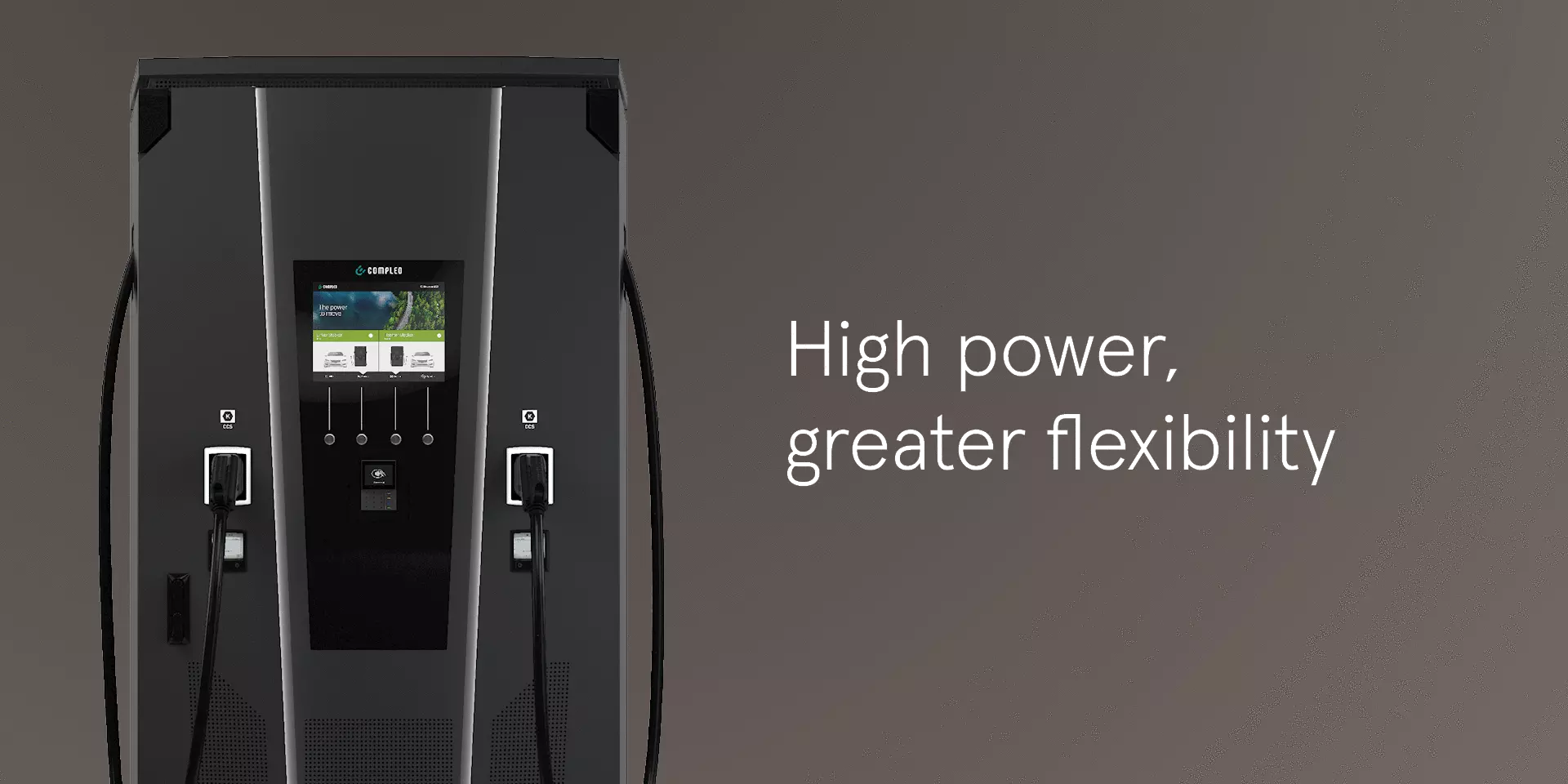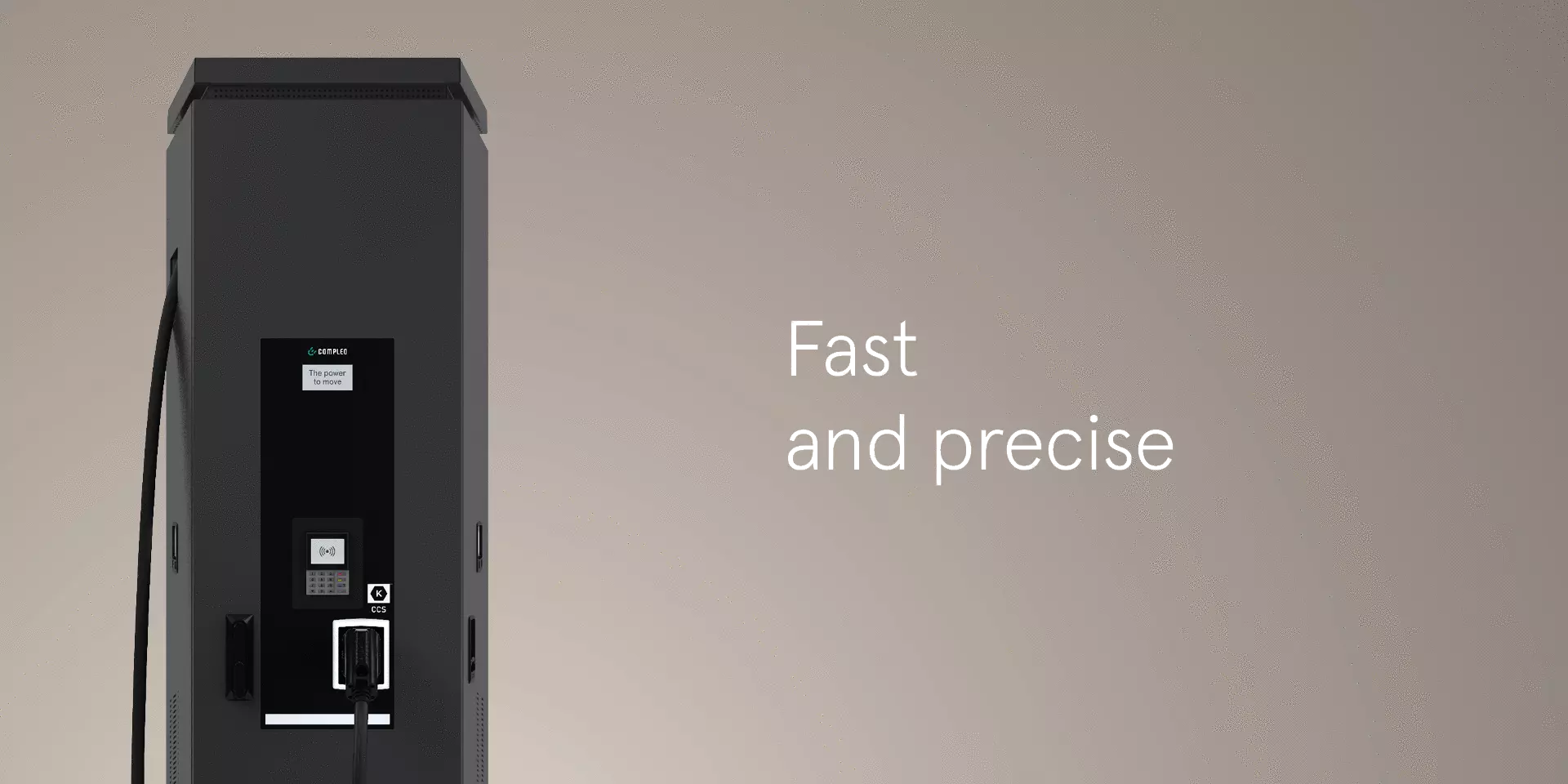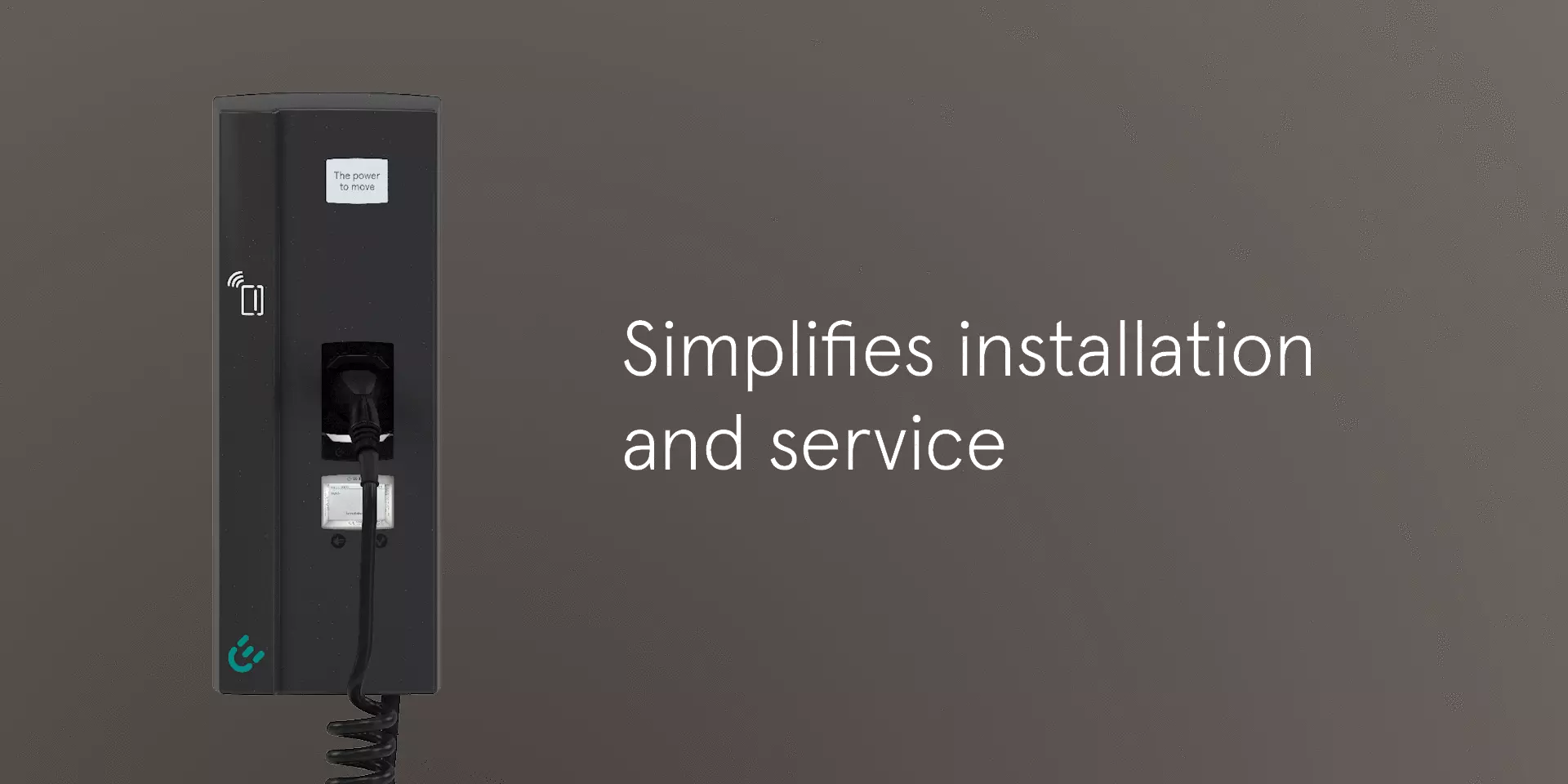Ready for payment
All drivers want to charge conveniently and pay easily. This is the idea behind the newly revised Alternative Fuels Infrastructure Regulation (AFIR) in Brussels. The regulation has been in force in all EU member states since April 13, 2024. However, there are a few things to bear in mind so that charging becomes as natural as paying at the supermarket.
As a CPO of public charging points, rely on a future-proof interaction between payment solution and charging station. Compleo offers you many years of experience in the key areas of payment, calibration law and smart charging solutions. Everything from a single source for you.
AFIR - What charge point operators need to know
The Alternative Fuels Infrastructure Regulation (AFIR) is intended to accelerate the expansion of public charging points in the European Union and create legal certainty. Essentially, the AFIR contains minimum technical requirements for the safe and interoperable installation and operation of publicly accessible charging points. The regulation is already in force in all EU member states and must be implemented by all stakeholders. A comprehensive measure to promote green mobility.
AFIR applies here
Newly installed charging points that are publicly accessible must comply with the AFIR regulations.
These are charging stations on the roadside as well as in parking lots, for example in retail stores.
New charging stations must have
a standardized interface,
which enables the transmission of POI and
of billing data.
Charging points must offer direct payment
either via an integrated payment terminal,
an external payment station or a
specific QR code (QR-code only for LP < 50 kW).
For newly installed charging points
the prices for charging energy
must be displayed transparently.
DC charging stations and payment terminals
Performance 50 kW and more
- All public charging points with a capacity of 50 kilowatts or more must offer the option of paying for charging via debit or credit card. These can be physical cards as well as digital debit or credit cards that are integrated into mobile devices such as smartwatches or smartphones.
- Roaming remains a payment option: The EV driver can decide how they want to pay without discrimination.
- There is a retrofitting obligation with a card payment option for charging stations over 50 kilowatts from January 1, 2027.
AC/DC charging stations alternative with QR code
Performance under 50 kW
- Charging points with an output of less than 50 kilowatts can integrate a card reader or connect it externally, but they can also offer "secure payment" as a third solution, for example with a "specific QR code". CPOs then enable secure web-based payment via the QR code.
- Each of these three payment solutions specified in the AFIR for charging stations under 50 kilowatts can also be offered exclusively on a stand-alone basis.
- Roaming remains as a payment option: The EV driver can decide how they want to pay without discrimination.
- There is no retrofitting obligation for charging stations below 50 kilowatts.
Interpretation aid regarding price and QR code display
Immediately after the AFIR came into force, the CharIN Alliance pushed for a more precise interpretation of the requirements. Two important pieces of information were therefore published for CPOs.
- The AFIR requires a price display per charging point. This can be done for charging stations without a payment terminal in a charging app or within the web application for direct payment. Speratly for every charging point! The station itself does not necessarily have to display the price.
- QR codes that enable direct payment must be "specific". This means at least 1 individual code per charging point number. If the code is simply a sticker on the charging station, this is permissible, but the CPO remains responsible for ensuring that the payment is secure and bears the cost risk. Compleo therefore clearly recommends displaying the QR code for direct payment in accordance with AFIR on a display at the charging station. This is particularly effective in preventing phishing attempts! Regular checking of all QR code stickers in the entire charging network is therefore no longer necessary.
Direct Payment attracts with its simplicity
The simplification of payment at charging points called for by AFIR comes at just the right time: more and more e-cars are leading to more and more users at charging points. Direct Payment offers a particularly good charging experience for the largest possible number of users right from the start. Direct Payment means: Simply authorize contactless or via app & charge exactly according to kWh.
Depending on the payment solution you choose as a charging point operator, this offers acceptance of common payment methods such as Girocard, Mastercard, Maestro, Visa, Apple Pay and Google Pay. Direct Payment offers you as CPO the price sovereignty and the security of the payment flow through pre-authorization of the payment.
Do you have further questions about AFIR and payment?
We are happy to help and advise you every step of the way!
